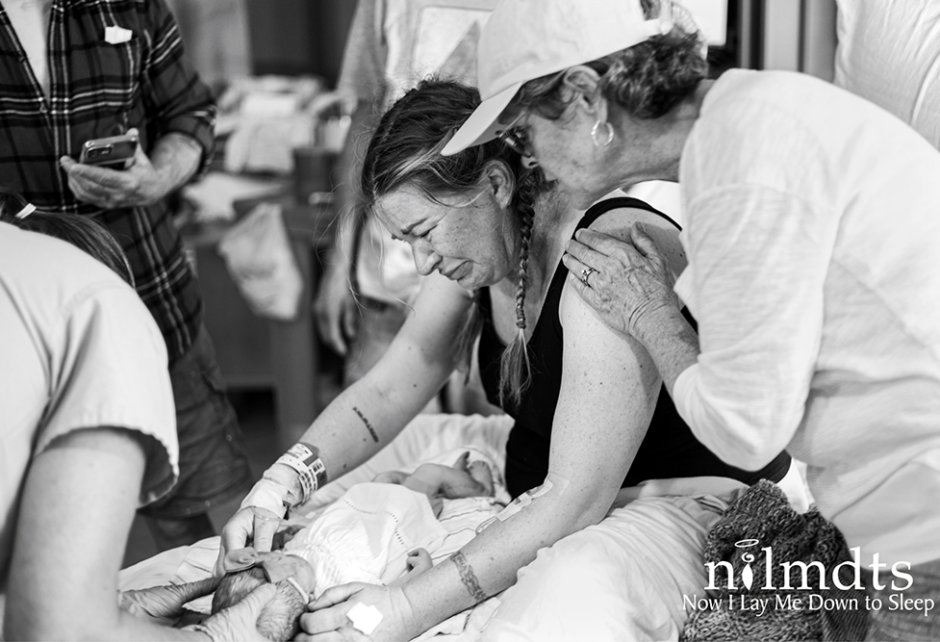
What is a Gentle C-Section? All About The New “Family-Centered” Approach
Written by Erin Feher
Photography by Photographed by Nicki Sebastian
Dr. Robyn Lamar, an OB/GYN at UCSF Medical Center, was explaining to her pregnant patient what she could expect during her forthcoming c-section. She mentioned that once the baby was born, it would be taken to the nursery while doctors worked on stitching up the mother. Her patient immediately burst into tears. Although this was her second child, and her second c-section, the first had been performed in her home country of Sweden, where the protocols were very different. “She told me about how in Sweden she got to hold the baby on her chest the entire time and was able to breastfeed right away,” Dr. Lamar recalled. “At the time, that was so far from anything I had ever heard of.”
But having delivered countless babies, Dr. Lamar was intimately familiar with the magic “golden hour”—that first 60 minutes of a baby’s life when skin-to-skin contact and breastfeeding initiation can maximize that bonding experience between mother and child. During a typical c-section in America, babies often spend that first 60 minutes in a pediatric nursery while their mother finishes and recovers from surgery. So, she started doing some research and discovered that many hospitals abroad, and even a few in the U.S., were changing the way they performed c-sections to allow mother and child to spend that golden hour together. They were often dubbed “gentle c-sections” and were offering women a more active and empowered role in the surgical birth of their child.
“I really wanted a way to acknowledge that c-sections are birth, too,” says Dr. Lamar. “It is a surgery, but is a special moment for that family—their child is coming into the world.” Three years ago, Dr. Lamar set about changing the c-section protocol at UCSF hospitals. The new approach, which UCSF calls the “family-centered c-section,” is defined by subtle differences in practice that can result in a dramatically different birth experience.
First, they changed the rules of how many people a mother could have with her in the room, from one to two people. Now, in addition to her partner, a mother could also be supported by her doula or another friend or family member. She could even opt to bring in a photographer. Second, they offered a double-sided drape. “So, when it’s time, we can drop the opaque part and you can see your baby emerge into the world.” Third, and most importantly, as long as the baby or mother doesn’t appear to need any additional assistance, after a quick check-up by the pediatrician in the room, they place baby directly on the mother’s chest. Mother and baby stay together, and can even breastfeed, throughout the remainder of the surgery.
Other small changes include placing the monitors and IVs in thoughtful places as to not obstruct the mother’s view or her ability to hold her child. The bed can also be slightly elevated so she is more upright and able to see what’s happening. Says Dr. Lamar, “We wanted to reorder how we were doing c-sections to really honor what a pivotal event it is for parents.”
San Francisco-based mother of three Vanessa Wauchope Welstead says her oldest son’s birth—an unexpected, emergency c-section—was highly traumatizing. She barely remembers the birth and due to complications, she was apart from her son for nearly three days. But for the births of her second and third children, she switched to California Pacific Medical Center, which also offers family-centered c-sections.
“My second c-section was actually an amazing experience,” says Wauchope Welstead. “The anesthesiologist narrated the entire thing for me—he stood by my side and counted down. He said in ten seconds you will have your baby…ten, nine, eight… I really loved a play by play. And then my doctor put my daughter right on my chest. She actually did a breast crawl and was literally nursing while I was still being worked on on the operating table. I came out of her birth feeling so empowered.”
For more stories about c-sections and birth prep, read our pieces on C-Sections: What You Need to Know Pre-Op and Post-Op, Why We Need To Stop Using The Term “Natural” Birth, To Doula or Not To Doula?, and 10 Moms Share Their Birth Soundtrack.
Share this story



